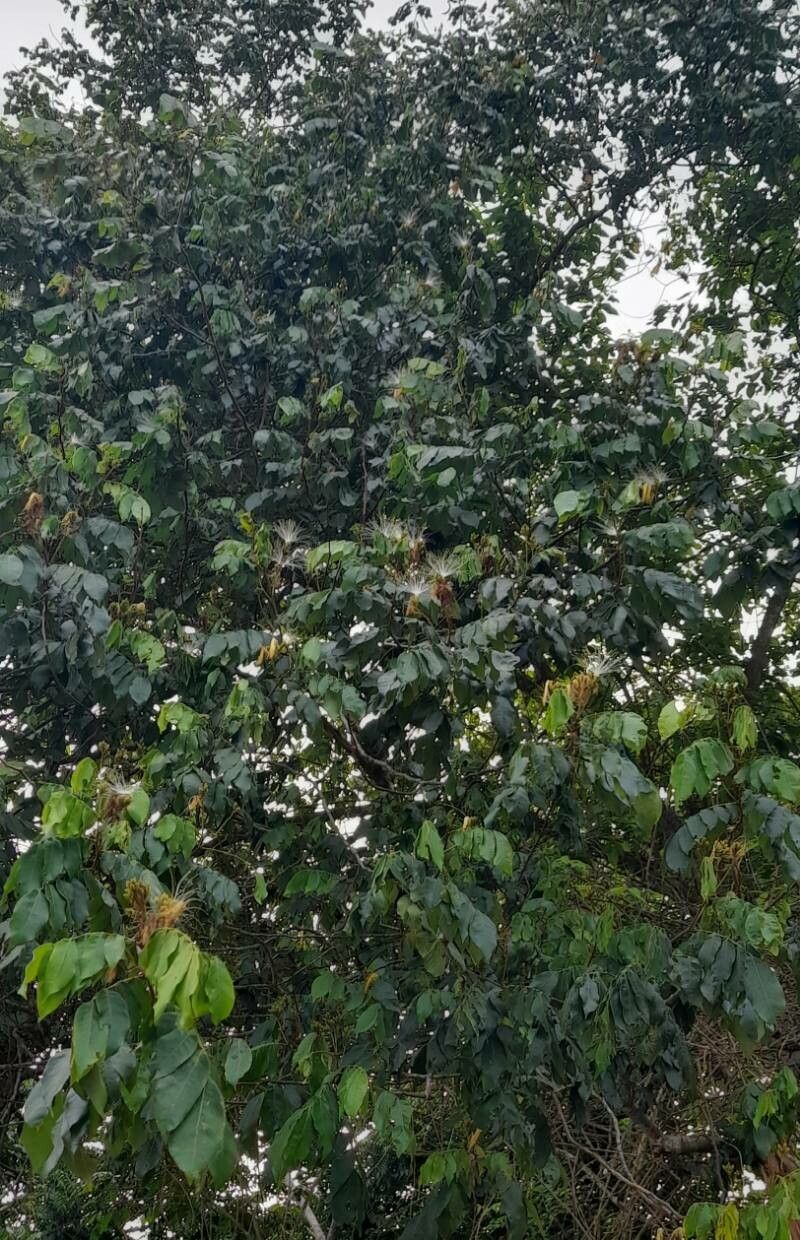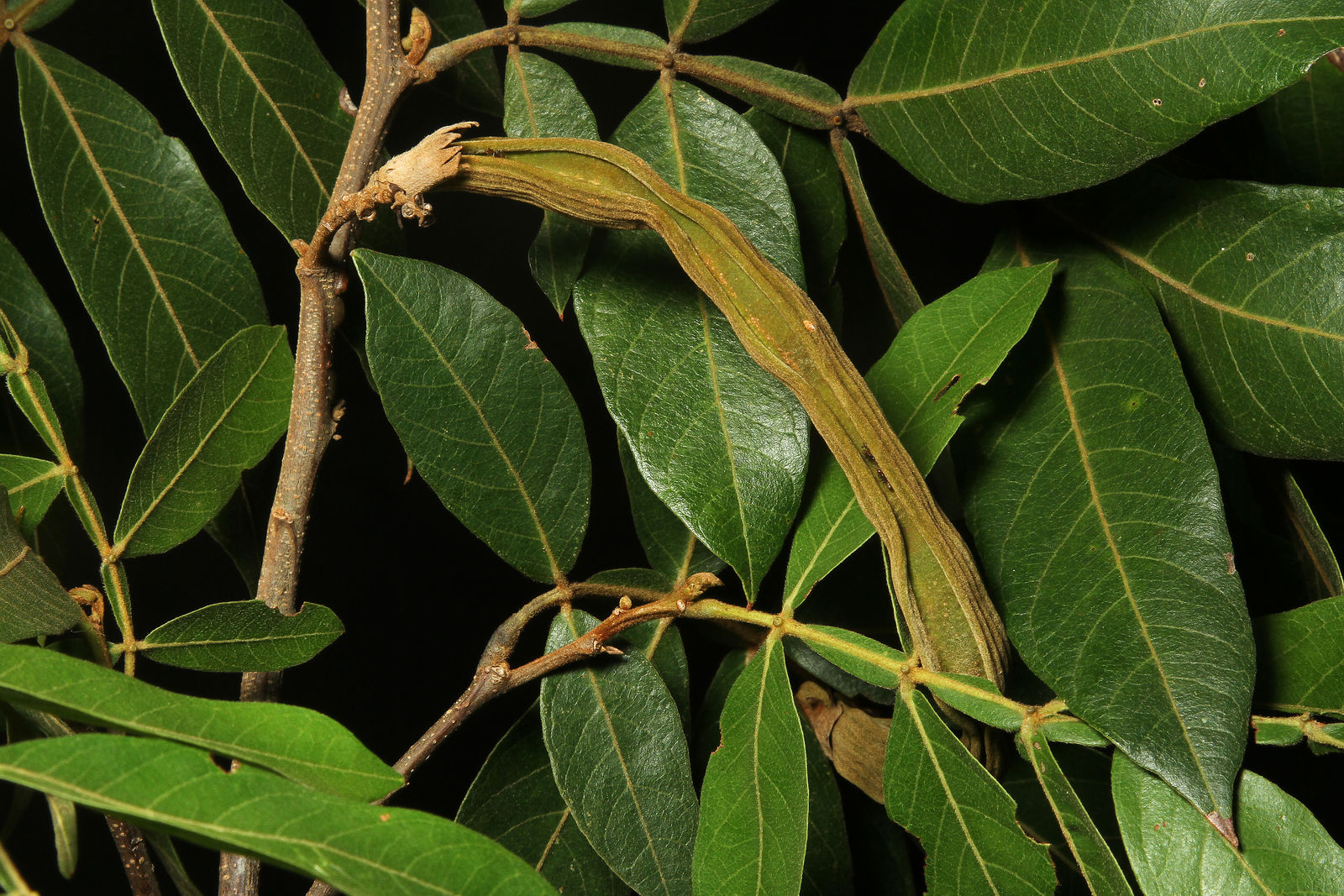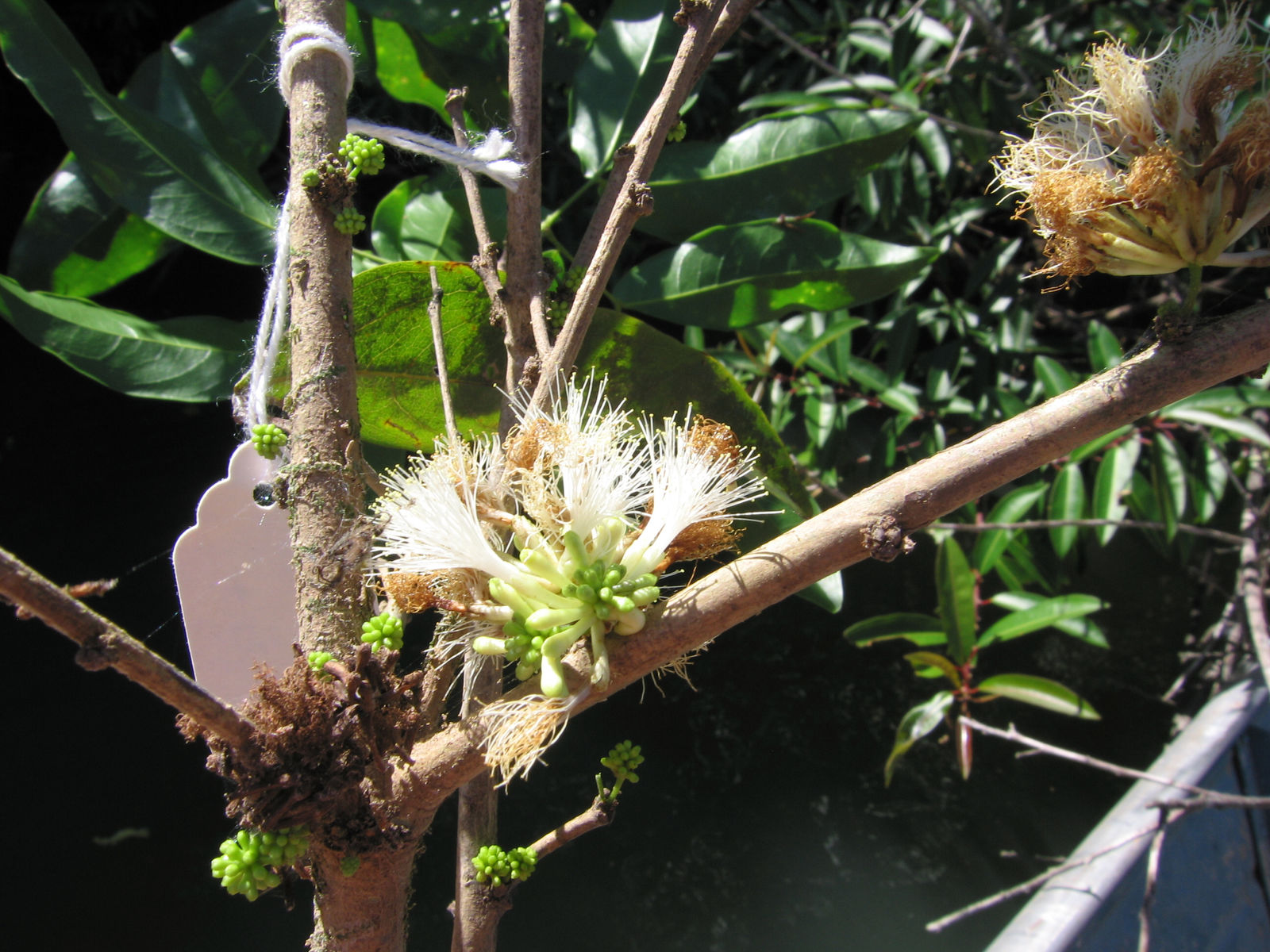Catclaw acacia
inga vera
Also known as: ["Catclaw acacia","False tamarind"]
Overview
A tropical tree native to Central and South America, known for its bipinnate leaves and fragrant flowers.
Benefits & Perks
["fragrant flowers","wildlife attractant (bees, butterflies, birds)","drought tolerant"]
Botanical Classification
| Phylum: | Magnoliophyta |
| Class: | Magnoliopsida |
| Order: | Fabales |
| Family: | Fabaceae |
| Genus: | Inga |
| Botanical Name: | Inga vera |
Plant Characteristics
Basic Information
- Category: Trees
- Suitable Location: outdoor garden in tropical or subtropical regions
- Suitable For:
- Is Weed: No
- Allergenicity: low
Environmental Needs
- Climate: {"temperatureRange":"15–30°C"}
- Hardiness: {"zones":"9–11"}
- Misting: rarely required, only if ambient humidity is very low
- Drainage: Fast-draining to prevent waterlogging.
- Soil Type: Well-draining potting mix with added perlite or sand for aeration.
Maintenance Level
- Maintenance Level: moderate
- Toughness Level: moderate
- Pruning Frequency: Annually in late winter or early spring before new growth begins.
- Pruning Intensity: Moderate; remove up to one-third of old growth to rejuvenate the plant.
Care Details
Ideal Sunlight Coverage:
Bright indirect light for 6–8 hours daily; can tolerate partial shade but may reduce flowering.
Sunlight Tolerance Tips:
Acclimate gradually to intense light, protect from direct midday sun to avoid scorching, and adjust placement based on indoor/outdoor conditions.
Care Requirements
Care Difficulty
moderatemoderate
Sunlight
partial shade to full sun
Rotate plant for even light exposure; use sheer curtains to filter intense sun; avoid sudden light changes.
Watering
every 7–10 days during active growth, reduce in winter
Water thoroughly until it drains from the bottom, allow soil to dry between waterings, and avoid overwatering.
Soil
well-draining, fertile loam with organic matter
pH: Slightly acidic to neutral (pH 6.0–7.0).
Ensure pots have drainage holes; avoid compacted soil; topdress with compost annually.
Temperature
Prefers 65–85°F (18–29°C); tolerates mild frosts but thrives in warm, stable conditions.
Protect from drafts; use a thermometer to monitor; adjust care based on seasonal changes.
Fertilizing
every 4–6 weeks during growing season with balanced liquid fertilizer
Flush soil occasionally to prevent salt buildup; apply fertilizer after watering to avoid root burn.
Propagation
Methods
Stem cuttings in spring or early summer.
Step-by-Step Propagation Guide
- Take a 4–6 inch cutting, remove lower leaves, apply rooting hormone, plant in medium, keep moist and humid.
Best Time: Spring or early summer when the plant is actively growing.
Environment
High humidity (70–80%), warm temperatures (75–85°F), and indirect light.
Medium
Well-draining mix of perlite and peat moss or cactus mix.
Hormone
Recommended to use rooting hormone for faster root development.
Timeline
Roots develop in 4–6 weeks; new growth appears in 2–3 months.
Tools Needed
Pruning shears, rooting hormone, small pots, misting spray bottle.
Quick Tips
Use healthy, non-flowering stems; maintain consistent moisture; provide bottom heat for faster rooting.
Pruning & Repotting
Pruning Guide
Method
Use clean cuts just above a leaf node or branch junction; avoid cutting into old wood.
Pruning Plan
Prune to maintain shape, encourage bushier growth, and remove dead or diseased branches.
Tools
Pruning shears, sterilizing solution, gloves.
Checklist
Sterilize tools, prune dead/damaged growth, shape the plant, clean up debris.
Repotting Guide
Best Season
Spring, before the active growing season starts.
Pot Size
Increase pot size by 2–3 inches in diameter.
Method
Remove plant gently, trim roots if needed, place in a slightly larger pot with fresh soil, water lightly.
Suggestions
Repot every 2–3 years or when roots fill the pot; necessary to refresh soil and provide space.
Checklist
Check root bound status, prepare new pot, trim roots, add fresh soil, water lightly.
Advanced Care Tips
Watering Mastery
Watering Checklist
Check soil moisture, water deeply, ensure drainage, adjust for season.
How to Apply Water Properly
Water directly at the root zone, ensure water penetrates deeply, allow excess to drain, and water in the morning to reduce evaporation.
Watering Schedule Tips
Water deeply once the top inch of soil feels dry; reduce frequency in winter to prevent root rot.
Soil Improvement
Add perlite or coarse sand for drainage; incorporate organic matter like compost for fertility.
Temperature Stress Management
Signs of Temperature Issues
Yellowing leaves, leaf drop, or stunted growth in extreme cold; wilting or scorching in excessive heat.
Cold Stress
Slows growth, may cause leaf drop, and can lead to root damage if temperatures drop below 50°F (10°C).
Solution: Move to a warmer location, insulate roots with mulch, and avoid watering until temperatures rise.
Hot Stress
Leaves may wilt, curl, or scorch; growth may slow due to excessive transpiration.
Solution: Provide shade during peak heat, increase humidity, and water more frequently to compensate for evaporation.
Fertilizing Guide
Fertilizing Checklist
Check season, dilute fertilizer, apply to moist soil, avoid contact with leaves.
Fertilizing Method
Use balanced liquid fertilizer diluted to half strength every 4–6 weeks during growing season (spring/summer); avoid fertilizing in winter.
Common Problems & Solutions
Toxicity Warning
Cats
Non-toxicInga vera is not known to be toxic to cats. It does not pose a significant risk if ingested or handled by felines.
⚡ Toxic If:
None
Dogs
Non-toxicInga vera is not known to be toxic to dogs. It does not pose a significant risk if ingested or handled by canines.
⚡ Toxic If:
None
Humans
Non-toxicInga vera is not known to exhibit toxic properties to humans. It is generally considered safe for consumption and handling.
⚡ Toxic If:
None
Frequently Asked Questions
Q: Is Inga vera suitable for indoor cultivation?
A: No, it is a large tree best suited for outdoor landscapes.
Q: Does Inga vera have any medicinal uses?
A: Traditional uses are limited, but it is primarily valued for its ecological role.
Q: How fast does Inga vera grow?
A: It is a moderately fast-growing tree, especially in tropical conditions.
Quick Reference
| Family: | Fabaceae |
| Care: | moderate |
| Light: | partial shade to full sun |
| Water: | every 7–10 days during activ |
Get Expert Care Tips
Download the Plantious app for personalized care reminders and plant identification!
Google Play App Store








